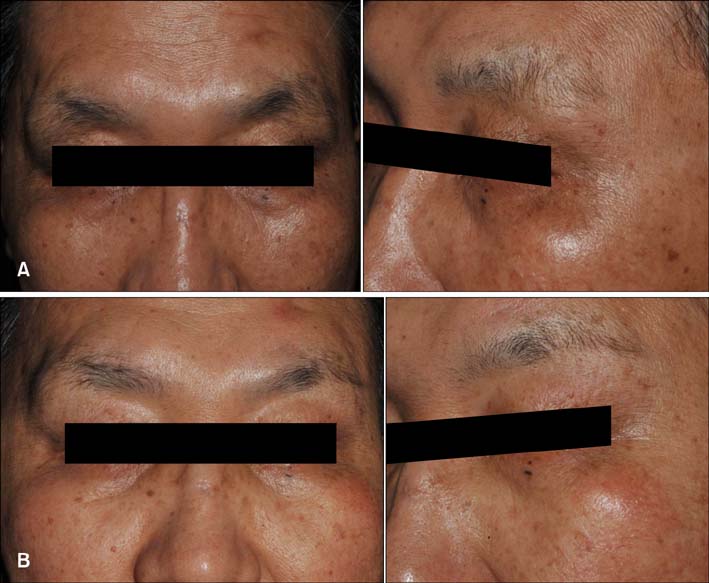Ann Dermatol.
2015 Oct;27(5):637-638. 10.5021/ad.2015.27.5.637.
Hypertrichosis and Hyperpigmentation in the Periocular Area Associated with Travoprost Treatment
- Affiliations
-
- 1Department of Dermatology, Chungnam National University School of Medicine, Daejeon, Korea. resina20@cnu.ac.kr
- KMID: 2171476
- DOI: http://doi.org/10.5021/ad.2015.27.5.637
Abstract
- No abstract available.
MeSH Terms
Figure
Reference
-
1. Lee AJ, McCluskey P. Clinical utility and differential effects of prostaglandin analogs in the management of raised intraocular pressure and ocular hypertension. Clin Ophthalmol. 2010; 4:741–764.2. Strober BE, Potash S, Grossman ME. Eyelash hypertrichosis in a patient treated with topical latanoprost. Cutis. 2001; 67:109–110.3. Kammer JA, Katzman B, Ackerman SL, Hollander DA. Efficacy and tolerability of bimatoprost versus travoprost in patients previously on latanoprost: a 3-month, randomised, masked-evaluator, multicentre study. Br J Ophthalmol. 2010; 94:74–79.
Article4. Johnstone MA, Albert DM. Prostaglandin-induced hair growth. Surv Ophthalmol. 2002; 47:Suppl 1. S185–S202.
Article5. Ortiz-Perez S, Olver JM. Hypertrichosis of the upper cheek area associated with travoprost treatment of glaucoma. Ophthal Plast Reconstr Surg. 2010; 26:376–377.
Article


